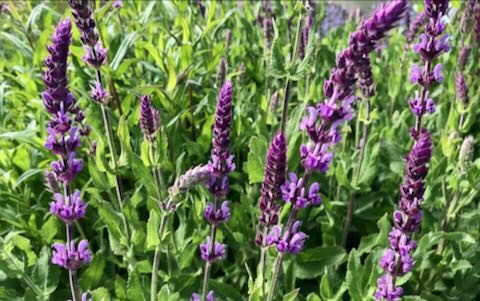- Out-of-Stock



Attractive mauve colour distinct from the usual pinks and blues, cultivation as per other nemorosa varieties, will repeat flower on good soil if trimmed hard after first flowering.
Attractive mauve colour distinct from the usual pinks and blues, cultivation as per other nemorosa varieties, will repeat flower on good soil if trimmed hard after first flowering.
Data sheet
Pretty variety that begins soft yellow then fades as the flowers age. Prolific flowering during winter, liking drained soils and drying out a little in summer. Cut back fairly hard early summer to around 2/3 to half height to keep compact. Looks terrific in mass plantings like all the wallflowers.
Rare white form of the usual blue, useful for ground cover in part shade or sun. Vigorous and spreading like the blue form.
Terrific new variety from our own breeding, lower growing than most other varieties at around knee high, but larger than usual flowers in a good rich plummy colour. Good foliage too, likes moist rich soil.
A very late flowering variety with tall wiry stems and in its early stages an interesting tight flower bud, providing a similar effect to craspedia globosa. Attractive low basal foliage, and a sculptural interesting plant for late summer groupings.
A cultivar of nemorosa with clear blue flowers in spring. Makes a delightful pot plant, or woodland planting. Do not over-water after flowering, caution to those with irrigation systems, keep soil barely damp and not wet.
A ground govering variety with coral red flowers in spring on wiry stems. Good for floral work and easy amongst geraniums and campanulas.
Perennial wallflower that begins purple and transforms to apricot peachy tones as the flowers age, giving a lovely effect. Winter flowering, bird and butterfly attracting, fragrant.
White flowered low spreading ground cover for full sun preferring loose drained soil types. Useful for foreground and border plantings.
Prolific mid season flowering verbena which combines well in meadow plantings amongst other perennials, the dark stems and foliage look particularly good in full sun with summer colours.
A recent introduction by us is this sedum from my mothers garden, with white flowers, which is an unusual colour in the world of sedums! As with other sedums, easy to grow in full sun position in most soil types. Rarely but occasionally these can produce a pale pink sport, which should be removed with a sharp knife at the crown at the time of flowering.
Attractive multicoloured variety, which starts off as lime green and cream then ages to pink or pale blue depending on soil pH. Morning sun only, best in part shade with good drainage.
Lovely fluffy flowering texture in summer providing great fill and a soft contrast. A great grass all round and in early stages grows much like 'Karl Forester' until flowering time, when it looks very different; responds best in heavier fertile soils, and to date doesnt seed here.
Lowest growing of all the miscanthus, at around knee high, a very versatile and useful foreground filler that wont seed, and looks great with sedums, echinacea, salvia and rudbeckia. Winter foliage has pretty rusty pink tones. Give it nice soil, being a smaller one its fast growing as the big ones.
Very pretty pale pink variety, mounding habit a bit over knee high for sunny position on drained soil. Trim after flowering to keep compact.60
Sky blue hydrangea, lighter in bud. In neutral or alkaline soil it tends to be light pink. Note all blue hydrangea need acid soil to produce correct colouring; in alkaline soil they will tend toward pink.
Pretty variety with numerous sprays of lilac flowers, very prolific in autumn.

Attractive mauve colour distinct from the usual pinks and blues, cultivation as per other nemorosa varieties, will repeat flower on good soil if trimmed hard after first flowering.